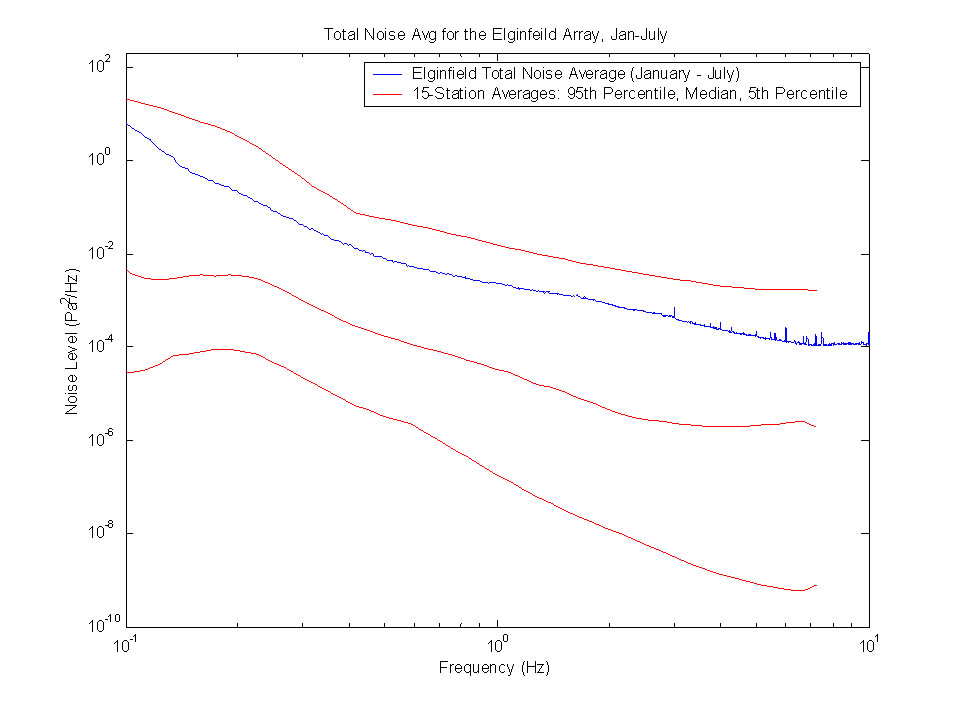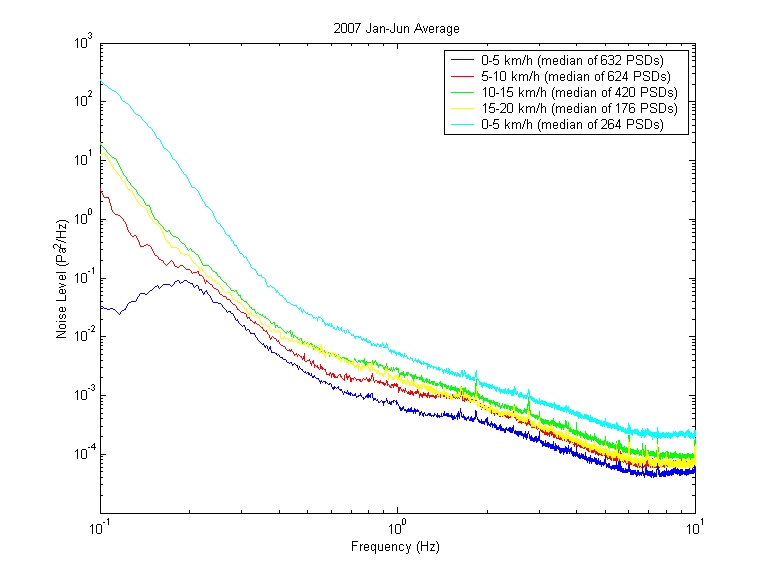Meteor Infrasound
The Elginfield Infrasound Array (ELFO)
The Wind Shelter and Wind Noise
Wind noise generically affects all infrasound measurements. The noise is generated by turbulence at all scales close to the microphone. Shown below is the average over all elements for the first half of the year of the noise at ELFO relative to the International Monitoring System Arrays as described by Bowman et al (2005).

Most of the noise is generated by wind. Shown below is the relative noise averaged over one hour blocks when different wind speeds prevailed across the ELFO array. A clear dependence with wind speed is evident and underscores the need to isolate the microphone from wind as much as possible. Only at the lowest wind speeds are microbaroms (peaking near 0.2 Hz) easily detected by the array, attesting to the generally noisy site characteristics.

There are many wind shelter design suggestions and if the signal-to-noise ratio (SNR) is to be maximized, it is essential that the wind shelter is optimized for better performance to reduce the noise received by the element. For the best comparison between different noise shelters, they would all need to be tested in the same controlled environment.


How it Works
The wind shelter that is shown above has a sloping design, allowing the wind to move up and out of the way where the element will not detect its interference. This ensures that the infrasound signal is not mixed with any interference the wind may create.




